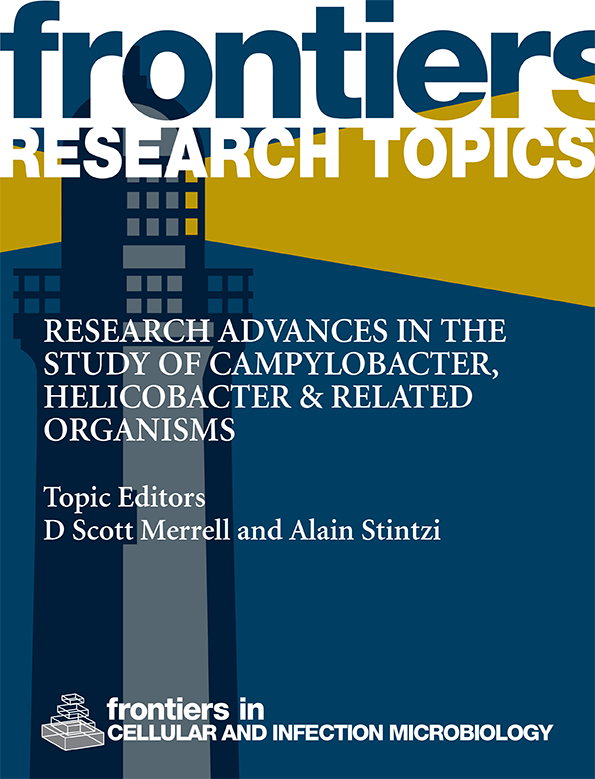意大利首次报告可产生广泛耐药性 blaNDM 的肺炎克雷伯菌 ST437
IF 4.8
2区 医学
Q2 IMMUNOLOGY
Frontiers in Cellular and Infection Microbiology
Pub Date : 2024-09-11
DOI:10.3389/fcimb.2024.1426817
引用次数: 0
摘要
据观察,产碳青霉烯酶的肺炎克雷伯菌株(CP-Kps)最近在全球迅速蔓延。产生新德里金属-β-内酰胺酶(NDM)的肺炎克雷伯氏菌(K. pneumoniae)克隆给医疗保健造成了巨大负担,尤其是在印度次大陆,这种克隆在那里广泛流行。然而,在意大利,有关这些新克隆的发病率数据却很有限,迄今为止还没有关于 ST437 产 NDM 肺炎克雷伯菌株的报道。在一名 85 岁的意大利男性患者身上发现了由肺炎克氏菌菌株引起的骶尾部溃疡感染,该患者患有多种并发症。抗菌药物敏感性检测显示,该菌株对多种抗菌药物具有广泛的耐药性,其中包括头孢哌酮和头孢唑肟/阿维巴坦等新型药物。基因组分析确定病原体为携带 blaNDM-5、blaOXA-232 和 blaCTX-M-15 基因的 ST437 型肺炎克雷伯菌株。发现首例病例后,医疗机构采取了多项感染控制措施,包括直接预防措施和加强标准交叉传播控制措施。携带新基因决定因子的病原微生物克隆的出现,尤其是在小城市中,需要及时诊断和治疗方案。此外,还需要建立有效的感染控制系统,以便及早发现和/或控制产生 NDM 的肠杆菌科细菌的传播。为了更好地了解这些克隆的潜在传播途径和进化情况,还需要开展进一步的调查。本文章由计算机程序翻译,如有差异,请以英文原文为准。
First report of a blaNDM-producing extensively drug resistant Klebsiella pneumoniae ST437 in Italy
Carbapenemase-producing Klebsiella pneumoniae strains (CP-Kps) have recently been observed to spread rapidly worldwide. New Delhi metallo-β-lactamase (NDM) producing clones of Klebsiella pneumoniae (K. pneumoniae) cause a significant healthcare burden, particularly in Indian sub-continent, where this clone is circulating widely. However, in Italy, data on the incidence of these new clones is limited, and an ST437 NDM-producing K. pneumoniae strain has not been reported to date. A sacral ulcer infection caused by a K. pneumoniae strain was identified in an 85-year-old Italian male patient with several comorbidities. Antimicrobial susceptibility testing revealed an extensive resistance to a wide range of antimicrobials, including novel agents such as cefiderocol and ceftazidime/avibactam. Genomic analysis identified the pathogen as an ST437 K. pneumoniae strain harboring bla NDM-5 , bla OXA-232 and bla CTX-M-15 genes. Following the identification of this first case, several infection control measures were implemented in healthcare settings, including direct precautions and reinforcement of standard cross-transmission control measures. The emergence of pathogenic microbial clones carrying new genetic determinants, particularly in a little city, requires prompt diagnosis and therapeutic protocols. An effective infection control system for the early detection and/or control of the transmission of NDM-producing Enterobacteriaceae is also needed. Further investigations are required to better understand the potential transmission routes and evolution of these clones.
求助全文
通过发布文献求助,成功后即可免费获取论文全文。
去求助
来源期刊

Frontiers in Cellular and Infection Microbiology
IMMUNOLOGY-MICROBIOLOGY
CiteScore
7.90
自引率
7.00%
发文量
1817
审稿时长
14 weeks
期刊介绍:
Frontiers in Cellular and Infection Microbiology is a leading specialty journal, publishing rigorously peer-reviewed research across all pathogenic microorganisms and their interaction with their hosts. Chief Editor Yousef Abu Kwaik, University of Louisville is supported by an outstanding Editorial Board of international experts. This multidisciplinary open-access journal is at the forefront of disseminating and communicating scientific knowledge and impactful discoveries to researchers, academics, clinicians and the public worldwide.
Frontiers in Cellular and Infection Microbiology includes research on bacteria, fungi, parasites, viruses, endosymbionts, prions and all microbial pathogens as well as the microbiota and its effect on health and disease in various hosts. The research approaches include molecular microbiology, cellular microbiology, gene regulation, proteomics, signal transduction, pathogenic evolution, genomics, structural biology, and virulence factors as well as model hosts. Areas of research to counteract infectious agents by the host include the host innate and adaptive immune responses as well as metabolic restrictions to various pathogenic microorganisms, vaccine design and development against various pathogenic microorganisms, and the mechanisms of antibiotic resistance and its countermeasures.
 求助内容:
求助内容: 应助结果提醒方式:
应助结果提醒方式:


